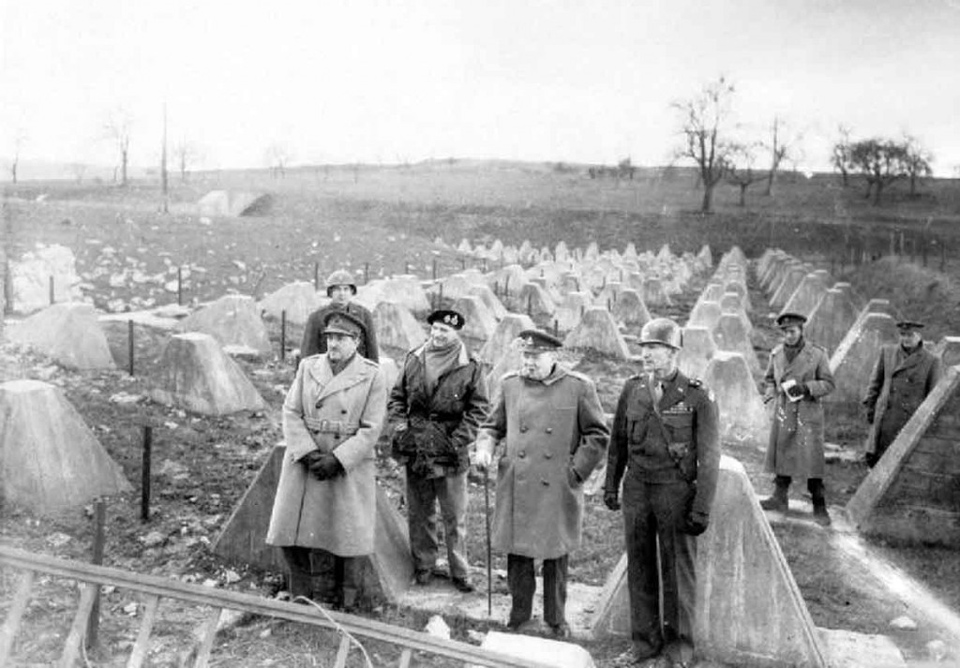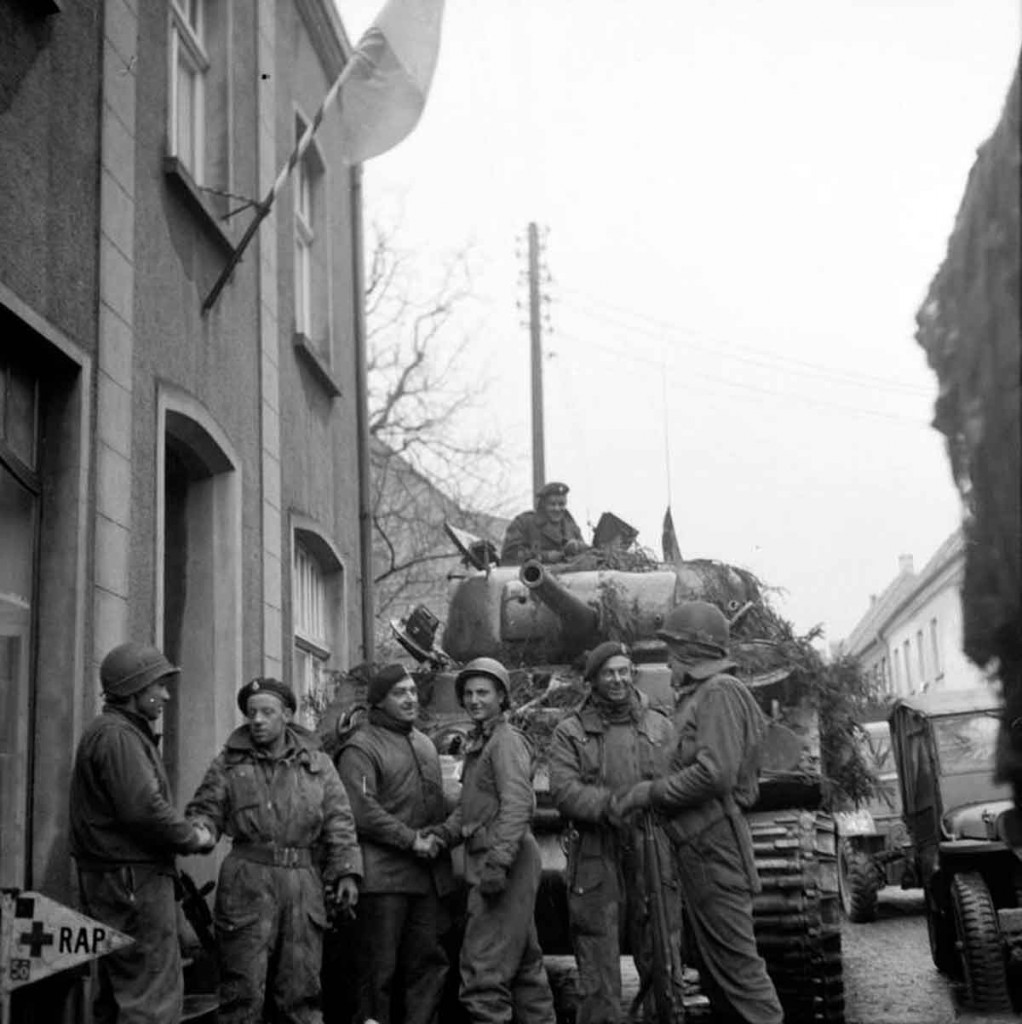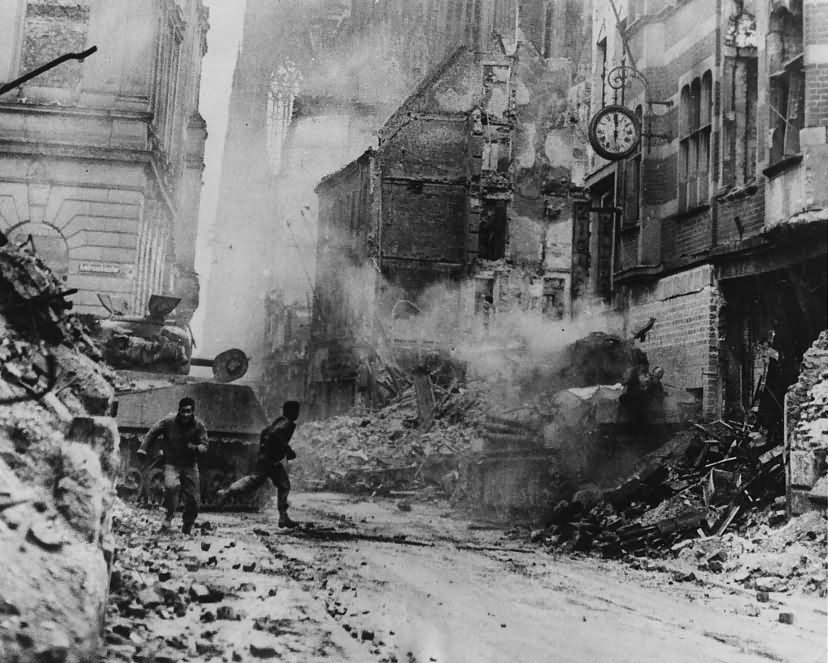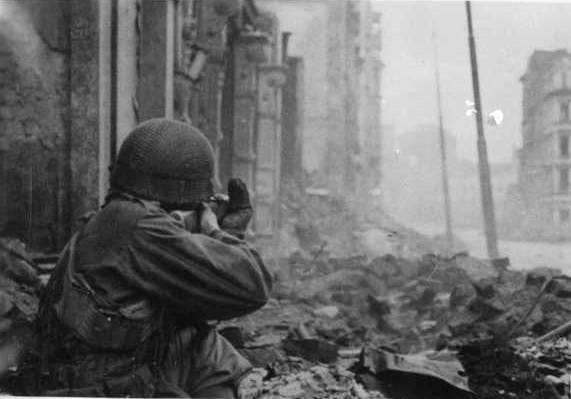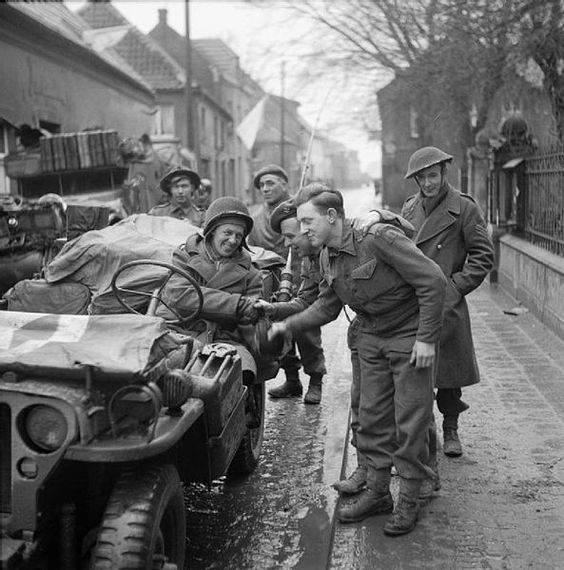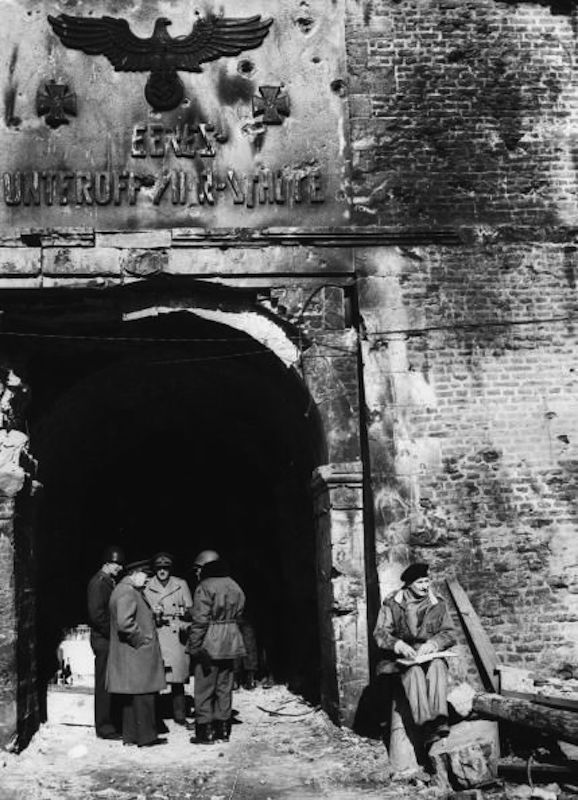Air Operations, CBI
BURMA- 12 10th Air Force B-25s and more than 60 fighter-bombers attack troops, dumps, road traffic, and other targets in and directly behind the Japanese Army battle lines.
- 31 P-47s support British 14th Army ground forces around Mogok.
- 4 341st Medium Bomb Group B-25s attack Chikhom.
- Nearly 50 14th Air Force fighter-bombers attack troops, stores, and road, rail, and river traffic across southern China.
- FEAF B-25s and V Fighter Command P-38s attack Hainan Island, especially the Samah airfield there.
- 49th Fighter Group P-38s based in the Philippines down 7 A6M Zeros over the Samah airfield on Hainan between 1307 and 1350 hours.
Air Operations, Europe
RAF BOMBER COMMANDDaylight Ops:
- 119 Lancasters of No. 3 Group carry out a G-H attack through cloud on the Wintershall oil refinery at Salzbergen.
- 1 Lancaster is lost.
- 48 Mosquitos of No. 8 Group attack Wesel, which is believed to contain many German troops and vehicles. The target had been cloud-covered for several days. Oboe Mosquitos provide the marking.
- 1 Mosquito is lost.
- 191 Lancasters and 7 Mosquitos of No. 5 Group attack the port of Sassnitz on the island of Rügen in the Baltic. Considerable damage is caused to the northern part of the town and 3 ships are sunk in the harbor.
- 1 Lancaster is lost.
- 87 Lancasters of No. 3 Group and 51 Mosquitos of No. 8 Group continue the attack on Wesel with two separate raids.
- There are no losses.
- 42 Mosquitos are sent to Berlin, 15 Lancasters lay mines off Sassnitz, and there are 5 Mosquito patrols and 2 RCM sorties.
- There are no losses.
- 42 Mosquitos are sent to Berlin, 15 Lancasters lay mines off Sassnitz, and there are 5 Mosquito patrols and 2 RCM sorties.
- There are no losses.
GERMANY:
- 260 9th Air Division B-26s and B-26s attack marshalling yards at three locations, a storage depot, and targets of opportunity.
- XXIX TAC covers US 1st Army ground forces as they reach the Rhine River.
ITALY:
- 12th Air Force B-25s attack targets in Brenner Pass and bridges at six locations.
- During the night, XXII TAC A-20s and A-26s attack targets in the Brenner Pass area, a river crossing, and two bridges.
Air Operations, Formosa
V Fighter Command fighter-bombers attack the Koshun area.
[Air Operations, Philippines
- 98 V Bomber Command B-24s attack Antipolo, Luzon, with 240 tons of bombs.
- XIII Bomber Command B-24s and 42nd Medium Bomb Group B-25s attack the San Roque and Zamboanga areas of Mindanao.
- V Bomber Command B-24s and B-25s, and V Fighter Command fighter-bombers support Filipino guerrillas on Luzon and attack Fort Drum, and Caballo Island.
- A 58th Fighter Group P-47 downs a reconnaissance aircraft near the Silay airfield on Negros at 1900 hours.
Air Operations, Volcano Islands
Task Group 52.2 TBMs and FMs provide support for US V Marine Amphibious Corps ground forces on Iwo Jima.
[Burma
In their slow advance down the Burma Road units of the Chinese 1st Army reach and capture Lashio.
[Eastern Front
The 2nd Belorussian Front finishes off the capture of Grudziadz, a key point in the German defensive system on the lower Vistula in Poland, and advances along the Polish Corridor toward Danzig. Enemy forces surrounded in the area of Köslin (Koszalin), in Pomerania, are also destroyed. The 1st Belorussian Front also advances in Pomerania, taking Belgard (Bialogard) and other towns that the Germans had determined to defend to the last.
In Hungary, the German Army Group South, having assembled considerable forces, Dietrich's 6th SS Panzer Army, 6th Army, Hungarian 3rd Army and 8th Cavalry Army, I SS Panzer Corps, 2nd Panzer Army, launches a powerful counteroffensive (Operation WALDTEUFEL)(FRÜHLINGSERWACHENBOR/SPRING AWAKENING?) north and south of Lake Balaton against the armies of the 3rd Ukraine Front. Simultaneously, Army Group E attacks in the southeast on the Drava. The mass of the German forces strike east from Székesfehérvár, toward Pecs from Lake Balaton in the south and toward Tatabanya in the north. The mobile reserves of the 3rd Ukraine Front are quickly sent up to prearranged positions in the Lake Velencei and Sarviz Canal sector, in support of the 27th Army.
GERMANYGrudzladz is captured by the Soviet 65th Army, and Belgard by the Soviet 3rd Shock and Polish 1st Armies.
HUNGARY
The last German offensive of the war, Operation SPRING AWAKENING, begins. The German forces comprise the 6th SS Panzer Army (I and II SS Panzer Corps and III Panzer Corps), 6th Army (IV SS Panzer Corps and Hungarian VIII Corps) and 2nd Panzer Army (XLIV and LXVII Corps)
430,000 troops, 5,600 artillery pieces and 880 tanks and assault guns, supported by 850 fuel-starved aircraft. Facing this force is the 3rd Ukrainian Front's 4th Guards and 26th Armies in the frontline, and the 27th and 57th Armies in reserve south of Lake Balaton (the Bulgarian 1st and Yugoslav 3rd Armies are facing Army Group E on the northern bank of the Drava River). The Soviets have 407,000 troops, 7,000 artillery pieces, 400 tanks and assault guns and 960 aircraft. Im the Stavka reserve is the 9th Guards Army while the 2nd Ukrainian Front lies to the south.
The German plan is to recapture Budapest by breaking through the junction of the 4th Guards and 26th Armies, thereafter annihilating the 2nd and 3rd Ukrainian Fronts trapped on the west bank of the Danube River
a totally unrealistic plan given Wehrmacht resources and the strength of the Soviet fronts. Due to the water-logged ground, the offensive gets off to a slow start, and the II SS Panzer Corps even fails to reach its jump-off position.[MORE]
[Iwo Jima
After a barrage by artillery and naval guns unprecedented in this campaign, the American V Amphibious Corps renews its attempts to break through the Japanese defensive line in the north of the island, but at the end of the day such progress as it has made can be measured in yards. Moreover the Japanese are by now used to the American technique; as soon as the enemy guns begin to fire, they take cover in the deepest dugouts, and come out again at once as soon as the barrage stops and the Marines advance to the attack. The scenes of the most bloody struggles are Height 362 B, the area around Airfield No. 3 and that to the east of the village of Motoyama. 28 Mustang fighters and 12 twin-engined P-61s arrive to be stationed on Airfield No. 1, where they can give speedy support to the ground operations.
[Pacific
- The Japanese army tanker Rikko Maru (9181t) is stranded and sunk near Keelung, Formosa.
- The Japanese merchant cargo ship Hokusui Maru (3944t) is sunk, probably by mine, off Otabe, Hokkaido.
Philippines
On Palawan the Japanese, firmly dug in, repulse the attacks fo the 186th Inf. On Burias the Americans make contact with the enemy for the first time.
[Western Front
The British 43rd Div and Canadian 2nd Div, II Corps of the Canadian 1st Army, reinforce their positions in the Xanten area, preparing for the final offensive against the city. The Canadian 3rd Div concludes its mission when it takes Sonsbeck; the 4th Arm Div pushes on from Sonsbeck toward Veen, while in the British XXX Corps sector, the 53rd Div continues to advance slowly toward Alpen, on the road to Wesel.
In the 9th Army sector Operation GRENADE is brought to a successful conclusion; the XVI, XIII and XIX corps have moved up from the Rur to the Rhine.
The offensive of the units of the VII Corps, US 1st Army, against Cologne continues, the 3rd Arm Div attacking from the north and the 104th Div from the south, while south of the city the 8th Div pursues its attacks toward the Rhine. The 9th Arm Div attacks toward the confluence of the Ahr River with the Rhine. In the 3rd Army sector operations continue along the Kyll.
[Images from March 6, 1945
|
|
|
|
|
|
|
|
